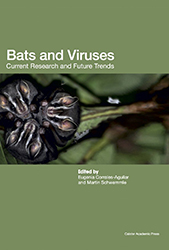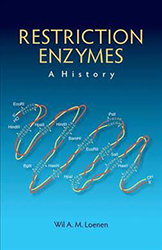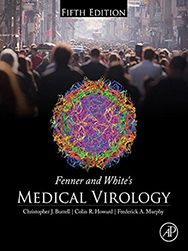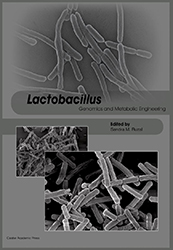Reviews
Issue: Fleming Prize Winners
20 October 2020 article

Bats and Viruses: Current Research and Future Trends
Edited by Eugenia Corrales-Aguilar & Martin Schwemmle
Caister Academic Press (2020) £159
ISBN: 978-1-912530-14-4

This book was a very interesting read, especially during the current SARS-CoV2 pandemic. There are around 1300 species of bats covering all parts of the world (except Antarctica), carrying more than 200 known viruses. The chapters provide an in-depth examination on the different families of viruses that bats host, or are at least suspected to host. The book also covers both arms of the immune response in bats – attempting to explain why bats rarely appear “sick” when carrying a range of viruses that are highly pathogenic in other animals and humans. Chapters 10 and 11 describe the difficulties faced isolating bat viruses due to the lack of bat-derived cell-lines, and how the use of bat breeding colonies as in vivo models is an expensive but rewarding resource. Finally, the metagenomics approaches used to successfully identify a range of viruses hosted by bats are described. Some chapters of the book touch upon controlling wild bat populations as a response to/to prevent viral outbreaks, and how this may be harmful to the environment – I would have liked to have read more on this. Most chapters are well written with useful tables and figures, although I found the content of some strayed from the topic of the book. I believe this book would be most useful to students, undergraduate and postgraduate, in both medical and veterinary backgrounds, although at £159 I doubt many would be able to purchase it.
Laura Kerr
University of Cardiff, UK
Restriction Enzymes: A History
By Wil A.M. Loenen, Leiden University Medical
Center Cold Spring Harbor Laboratory Press (2019) Free
ISBN 978-1-621821-05-2

Student courses on the discovery of lysogeny, transduction, conjugation, and restriction and modification enzymes (R-M) led me to a lifelong passion for microorganisms and their viruses, and the possibility to use these as model systems for infectivity and genome maintenance in all kingdoms. R-M systems limit genetic exchange between species, and protect “Self” by destroying invading DNA (phages, plasmids and transposons, which in turn have developend amazing “tit for tat” anti-RM systems), but, of course, also enabled gene manipulation, recombinant DNA technology, and simplified DNA sequencing.
Last year I published a book on R-M systems and their impact on molecular science and society. Restriction enzymes scan the DNA via sliding or “hopping, jumping or looping”, and cutting is under very tight control. These studies revealed surprising mechanisms for DNA recognition, restriction, methylation, but also “molecular motor” activities (DNA translocation), and finally, usage of the cofactors ATP and S-adenosylmethionine (SAM) with their myriad functions in health and disease. Some R-M systems link with latent anticodon nucleases implicated in stress responses, and called “RNA-based innate immune systems.” Type IV restriction enzymes recognize modified DNA and are important tools in epigenetic studies. Interestingly, hydroxy-m5C was already discovered in rat brain and liver in 1972, but did not receive much attention until human Tet1 (acute myeloid leukemia!) was shown to be involved in m5C conversion, and hence in control of normal and malignant cell differentiation.
Novel state-of-the-art techniques and the discovery of “phase variation” have given an enormous new impetus to the study of pathogenic bacteria, such as MRSA, Haemophilus influenzae, Helicobacter pylori, and Neisseria sp. In phase variation multiple R-M systems may act as a “bacterial immune system”, by alternatively turning on/off a subset of numerous R-M systems. Methylation-driven alternative gene expression creates phenotypic heterogeneity in these bacterial populations, affecting biofilm formation, pathogenicity and virulence of these organisms. These multiple R-M systems are a sign of genetic selection at the population level, which ensures survival of the species.
On a completely different clinical track, this phase variability allows detection of changes in the gut microbiome upon alterations in diet or disease treatment regimens (e.g. chemotherapy).
In conclusion, R-M systems are superb models for how the “DNA Book of Life” is used for replication, recombination, transcription/splicing, and repair, both in normal and in defence and stress situations in all kingdoms.
Wil A.M. Loenen
Leiden University Medical Center, The Netherlands
Fenner and White’s Medical Virology (5th Edition)
Written by C. J. Burrell, C. R. Howard & F. A. Murphy
Published by Academic Press (2016)
£76 ISBN 978-0123751560

The medical virology field is very fast moving, so it is surprising that it has taken 22 years to publish this new edition. However, it was well worth the wait. There have been several virology textbooks published recently, but this one stands out for me because, as the title indicates, it focuses on medically important viruses and, despite it containing a large amount of detail, it is presented in a very clear and attractive way. The book is divided into three sections. The first covers the basic principles of virology: history; classification; structure; replication; pathogenesis and immune responses; laboratory diagnosis; and epidemiology and control. The second section presents the different groups of medically important viruses, and the third focuses on viral syndromes. Thus, the book helps readers to understand the details of each virus group and the diseases associated with them, as well as the overarching principles of viruses and virus infection. The Figures and Tables are very clear and attractive, and this makes for a very visually appealing textbook. This book not only contains a large amount of information, it will also encourage a thirst for further knowledge in its readers. In this regard however, I would have liked to have seen more articles quoted as ‘further reading’ at the end of each chapter. The book will be of use to all those with an interest in medically important viruses, whether they be undergraduate students, experienced researchers or practising clinicians. This book is more expensive than some other recently published textbooks on this subject, but there is a lot packed in and I highly recommend it.
Christopher Ring
Middlesex University
Lactobacillus Genomics and Metabolic Engineering
Edited by Sandra M. Ruzal
Caister Academic Press (2019) £159
ISBN: 978-1-910190-89-0

Lactobacilli adapt to different environments – dairy and other food-sources, plant, gastrointestinal and vaginal niches. Lactobacillus bacteria specifically and/or generally adapt to a niche; L. sanfransicences is specific in adaptation while L. plantarum is generalistic. Chapter one discusses how this genus interacts with different environments. The next chapter focuses on the genetics and genomes of meat fermentation starter (L. sakei and L. crispatus), describing their biotechnological potential. The ability of lactobacilli to utilise complex carbohydrates gives them advantages. The pathways of complex glycan dissimilation are colourfully illustrated in chapter three, enhancing the readers’ comprehension. Lactobacillus bacteria produce lactic acid, which is necessary for the manufacture of biodegradable polylactic acid polymer (PLA), relevant in a world where renewable sources and eco-friendliness are encouraged. The metabolic pathways and gene tree of key biodegradation enzymes are the focus of chapter four.
In conditions of environmental stress, lactobacilli modify their surfaces. Chapter five explains the composition of the Lactobacillus cell wall, osmotic stress and corresponding impact on the architecture of the cell wall and microenvironment. The chapter also briefly mentions surface layer proteins (S-layer) and bacterial polysaccharides, though extensive details about their evolution, structure, function and application are found in chapter 6. Given the high level of research currently being carried out on glycobiology and glycomics, it would have been beneficial to include a chapter that focuses the extensive work on polysaccharides – cell wall polysaccharides (CWPS), capsular polysaccharides (CPS) and exopolysaccharides (EPS). Chapter seven discusses bacteriophage attacks in lactobacillus species, hampering the desirable fermentation, and proffers potential biological strategies to avoid phage infection. The last three chapters cover various gene transfer methods, gene expression, and antibiotic resistance its relationship with mobile genetic elements (MGE).
Omololu Fagunwa
University of Huddersfield, UK
